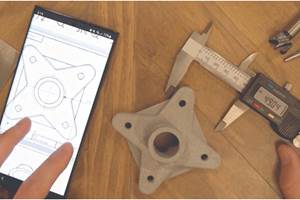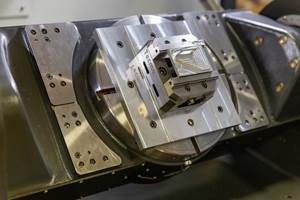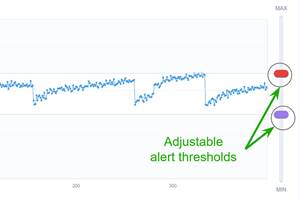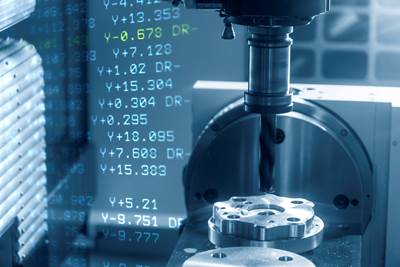Women Transform IMTS
The Digital Transformation Conference at IMTS featured an all-female panel that presented tips and tricks for understanding the value of manufacturing data, enabling those on the shop floor to make better decisions.
While a good deal of the talk at this year’s International Manufacturing Technology Show (IMTS) focused on big data, automation and 3D-printing technologies, what struck me most was the undercurrent of change in our industry. There was a palpable uptick in the number of female attendees learning about new technology, making purchasing decisions and leading event seminars. If nothing else, this shift brings visibility to the fact that women are stepping up and finding opportunity in manufacturing.
One such opportunity is to help drive the digital transformation—to provide value for manufacturing companies by making data-driven business decisions. For example, the organization Women in Big Data presented the Digital Transformation Conference during IMTS to help both male and female attendees understand the value of data to make better decisions on the shop floor. The inaugural event’s panel consisted of Nina Anderson, data scientist for AMT–The Association For Manufacturing Technology; Kim Cato, IT director for Whirlpool Corp. NAR Integrated Supply Chain and Manufacturing; Ester Codina, managing director - Sandvik Coromant; Stephanie Hendrixson, senior editor of Additive Manufacturing magazine; and Elisabeth Smith, president and CEO of Acutec Precision Machining Inc.
The panelists shared their industry expertise on data analytics, digital integration and the technologies driving this transformation. Here are six key takeaways:
1. Dream big but start small.
Many shops have an interest in Industry 4.0, but they do not know where to start. You can capture all the data you want, but without proper processing, it is useless. Instead, Ms. Codina suggests choosing one part to focus on to improve your operation.
Ms. Cato agrees. “You have to know what the one business problem is that you are trying to solve. What are the areas in your site with the greatest losses? Target the areas with the greatest area of loss, then come up with key tactical ways you can address it. If you have analytics data and you know what you can solve with that data, it almost becomes a self-funding area,” she says.
2. Data alone won’t solve problems.
According to Ms. Smith, the digital journey starts with awareness—really understanding the information out there. For instance, she says you can collect info, but use it to generate actions that are counter-productive to your operation. Make sure to balance everyone’s objectives, she advises, otherwise you might end up producing a lot of scrap really fast because you were only focused on increasing production rates.
Data will be used only in the ways you set it up to be used. The panelists say they are seeing between 13 to 30 percent improvement in overall equipment effectiveness (OEE), but that is more about cost avoidance versus actual profit made.
3. Technology doesn’t matter as much as your company culture.
There is a real fear in adding data analysis to your production process. CEOs and managers are interested in it, but Ms. Smith says equipment operators see it as people looking over their shoulders and micromanaging. Because of this, she says it is important to set the expectation that these investments are being made to enable them to use to do their jobs more efficiently and not just for management to use as a measuring stick. The entire organization needs to use data analysis to identify ways to make the overall process better. That said, Ms. Smith says organizations have to be ready for the fear of change shopfloor employees might have.
Ms. Cato suggests turning the conversation away from the operators and emphasizing the equipment. “We’re trying to prove the efficiency—the OEE of the machine itself. That’s a key distinction that needs to be clear in your strategy. You have to have the involvement of the operators, and you have to show them what they are going to get out of it.”
4. Small shops stand to gain.
According to Ms. Smith, a “dirty little secret” of large companies is that a lot of their data analytics are done in Excel spreadsheets because they have huge plants that are often using different enterprise resource planning (ERP) systems. However, she says as a small organization, you can get a handle on your information and connect your disparate systems because they are relatively small. The key, she believes, is to do so early. “Make the investment now and you’ll be at a competitive advantage.”
5. Additive manufacturing is one of the key technologies in the digital transformation journey.
The advance of additive manufacturing mirrors the use of data. “We don’t want to collect data or 3D-print things just because we can,” Ms. Hendrixson says. Instead, she says that manufacturers that are succeeding with additive are getting an immediate, tangible benefit from it. For example, a manufacturer might turn to 3D printing because of its design freedoms, to reduce tooling lead times or maybe even to avoid a tooling investment entirely.
Moreover, she says that the shift to 3D printing can have more significant implications, both for the manufacturing operation and the broader supply chain.
- If you are 3D-printing to design parts differently, you might change from making a component in five or six pieces to simply 3D-printing it as one piece.
- Mass production can give way to mass customization if a company decides it is more practical to 3D-print many iterations of a product rather than injection-mold identical copies.
- Instead of storing tooling somewhere, you now have the ability to store a file in the cloud and send it anywhere on your facility. You can think of localized manufacturing or manufacturing on demand. It changes how we think of inventory, and the whole supply chain starts to shift.
6. There are ample opportunities for women in manufacturing
Ms. Anderson sees all roles in digital manufacturing opening in opportunity for both women and the companies that employ them. Women bring perspective to the collaboration, problem solving and creativity in a company that can balance to the operation as a whole, she says.
Related Content
Finally, A Comprehensive Software Solution Designed for Small Job Shops
Zel X from Siemens is an integrated software application that consolidates collaboration, design, manufacturing, and operations into a comprehensive, easy-to-use solution. From RFQ to delivery, it’s a more efficient way to handle quotes, manage jobs, make parts, and collaborate with teams of all sizes.
Read MoreHow this Job Shop Grew Capacity Without Expanding Footprint
This shop relies on digital solutions to grow their manufacturing business. With this approach, W.A. Pfeiffer has achieved seamless end-to-end connectivity, shorter lead times and increased throughput.
Read MoreDiving Deeper Into Machine Monitoring Data
Data visualization is the first step in using machine monitoring data, but taking it to the next level requires looking for trends within the data.
Read MoreThe CNC Reveals its Secrets
Machine monitoring becomes a platform for predictive maintenance without requiring extra sensors.
Read MoreRead Next
3 Mistakes That Cause CNC Programs to Fail
Despite enhancements to manufacturing technology, there are still issues today that can cause programs to fail. These failures can cause lost time, scrapped parts, damaged machines and even injured operators.
Read MoreObscure CNC Features That Can Help (or Hurt) You
You cannot begin to take advantage of an available feature if you do not know it exists. Conversely, you will not know how to avoid CNC features that may be detrimental to your process.
Read MoreSeeing Is Believing: 3D Vision System Enables Bin-Picking Robot
With the help of a 3D vision system and robotic arms from FANUC, MetalQuest was able to automate a physically challenging bin-picking task.
Read More




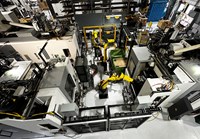
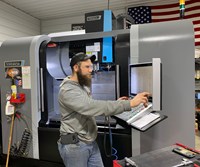
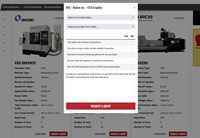



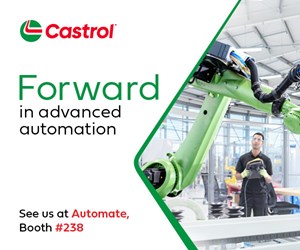

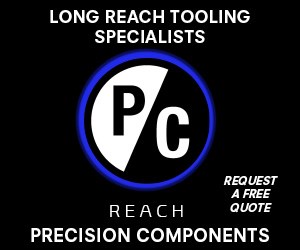


.png;maxWidth=300;quality=90)
.png;maxWidth=300;quality=90)


